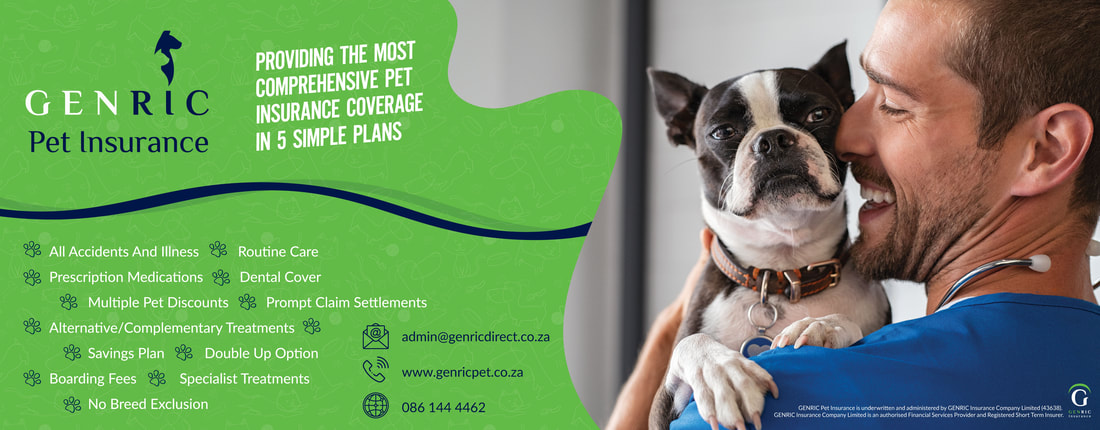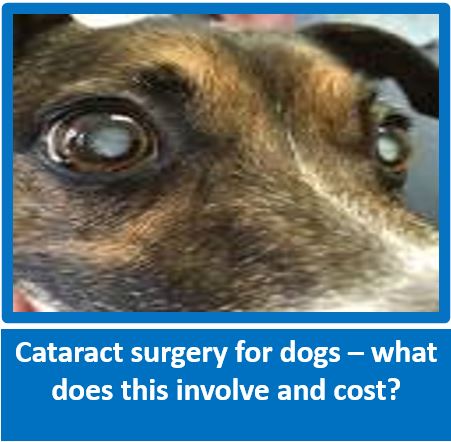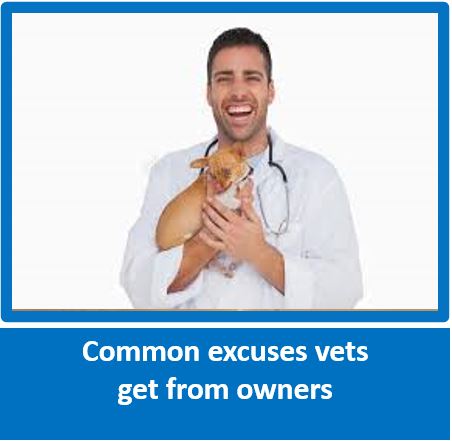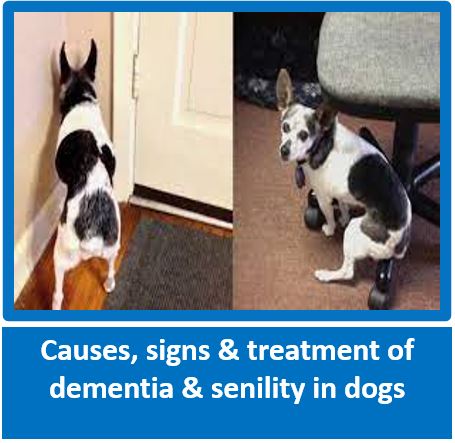How to Give Medications to Dogs
Never give your dog any medication that has not been prescribed by a vet and ensure that you stick to the dosage recommended - don’t make a decision to change this yourself. If your vet has said that your dog needs to be on medication for a long period of time, don’t stop it of your own accord because your dog is looking so much better. This can lead to the condition coming back and sometimes even worse than before.
Some human medications can be dangerous to dog’s and even small exposures to Vitamin D analogues like calcipotriene and calcitriol can cause life-threatening spikes in blood calcium levels in pets. If you would like to find a complete list of human medication dangerous to dogs, you can just Google it or ask your vet as a safeguard.
Our own vet always says ‘if in doubt check it out’!
Pills and Capsules
Where a pill is concerned, just slip your thumb into the space behind the canine teeth and press upwards on the roof of the mouth. As the mouth begins to open, press down on the lower jaw with the opposite thumb. Insert the pill as far back on the tongue, in the middle, as you can. This will encourage the dog to swallow it. If it is placed too far forward, the chances are that the dog will just spit it out. Now close the mouth holding the muzzle gently and rub the throat until the dog swallows. I find that offering a ‘sweetie’ as my grandkids call it, by way of a piece of chicken or treat immediately after the medication, help’s the association that taking medicine is a good thing.
As my own dogs have never had a problem taking a pill, I have not used the following technique, but many of my friends and clients tell me it works: - While holding the muzzle gently after giving the pill, blow briefly into the dog’s nose – this apparently causes the dog to swallow.
It is not advisable to break the pill into powder form as many of these have a really nasty taste and will put your dog off completely. Additionally some pills have a protective coating that assists with the delayed release of the medication and the pill needs to be taken intact. Interestingly enough, some pill manufacturers are realizing that it is not easy to give all dogs pills, and are altering the taste of the pill to be more acceptable to a dog.
Many pills can be given in food. What you do here, is make several small meatballs using a solid type tinned food and make sure the size is enough to adequately cover the pill. Have about 3 to 4 of these and first offer the dog the first two with no pill inside. The third pill contains the pill and the fourth treat ball is an additional treat for the dog.
Please remember to check with your vet if the pill can be taken with food first.
Liquids
These are given directly into the cheek pouch. I find the easiest to use is an eyedropper or a plastic syringe without the needle in it. Place the medication into the container to be used, then hold the dogs lips together - tilt the head upwards slightly, lift the lip and in the gap towards the back, s l o w l y dispense the liquid in the side into the cheek pouch – the dog will automatically swallow it. If there is a large amount to be given, do this in stages. As above, I always give the dog a ‘sweetie’ for taking its medicine.
Some human medications can be dangerous to dog’s and even small exposures to Vitamin D analogues like calcipotriene and calcitriol can cause life-threatening spikes in blood calcium levels in pets. If you would like to find a complete list of human medication dangerous to dogs, you can just Google it or ask your vet as a safeguard.
Our own vet always says ‘if in doubt check it out’!
Pills and Capsules
Where a pill is concerned, just slip your thumb into the space behind the canine teeth and press upwards on the roof of the mouth. As the mouth begins to open, press down on the lower jaw with the opposite thumb. Insert the pill as far back on the tongue, in the middle, as you can. This will encourage the dog to swallow it. If it is placed too far forward, the chances are that the dog will just spit it out. Now close the mouth holding the muzzle gently and rub the throat until the dog swallows. I find that offering a ‘sweetie’ as my grandkids call it, by way of a piece of chicken or treat immediately after the medication, help’s the association that taking medicine is a good thing.
As my own dogs have never had a problem taking a pill, I have not used the following technique, but many of my friends and clients tell me it works: - While holding the muzzle gently after giving the pill, blow briefly into the dog’s nose – this apparently causes the dog to swallow.
It is not advisable to break the pill into powder form as many of these have a really nasty taste and will put your dog off completely. Additionally some pills have a protective coating that assists with the delayed release of the medication and the pill needs to be taken intact. Interestingly enough, some pill manufacturers are realizing that it is not easy to give all dogs pills, and are altering the taste of the pill to be more acceptable to a dog.
Many pills can be given in food. What you do here, is make several small meatballs using a solid type tinned food and make sure the size is enough to adequately cover the pill. Have about 3 to 4 of these and first offer the dog the first two with no pill inside. The third pill contains the pill and the fourth treat ball is an additional treat for the dog.
Please remember to check with your vet if the pill can be taken with food first.
Liquids
These are given directly into the cheek pouch. I find the easiest to use is an eyedropper or a plastic syringe without the needle in it. Place the medication into the container to be used, then hold the dogs lips together - tilt the head upwards slightly, lift the lip and in the gap towards the back, s l o w l y dispense the liquid in the side into the cheek pouch – the dog will automatically swallow it. If there is a large amount to be given, do this in stages. As above, I always give the dog a ‘sweetie’ for taking its medicine.
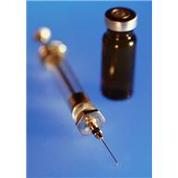
Injections
Many dogs that are insulin dependent need to be given insulin twice a day, and this will be for the rest of the dog’s life.
There are a lot of dogs that will allow the vet to give them the injection, but at home the owner just can’t get the dog to accept the injection, and some dogs can even become reactive towards the owner. If this is the case, it is simply that the owner is feeling stressed about giving the injection (understandable, especially if you are new to this procedure or the owner does not like needles) and the dog is actually reacting to the owners stress rather than the injection.
To overcome this, first do some stroking on your dogs neck or withers (or wherever you are going to inject). Every time you touch, stroke and lift this area of skin, immediately offer the dog a treat. You can even take the dog’s daily allowance of food and feed every piece of food this way, after touching in the area that is going to be injected. Do this over and over during the day and also at the times you would normally give the dog the injection. I have found with some dogs that they are more secure in certain areas of the home, so get into the habit of preparing the dog for the injection in an area such as this, then always give the injections in this area.
When the dog is happy with the above, then repeat the process, but have a closed syringe (without a needle in it), and take this a step further and ‘practice’ giving the injection,(stroke, lift the skin and pretend to insert the needle in the manner in which your vet has shown you to do) remembering to reward with a treat each and every time you do this.
In a very short period of time you will have desensitized your dog to accepting having an injection and you yourself will be more comfortable with the procedure. I still recommend giving the dog an extra special treat after the actual injection has been given.
If you have knowledge of TTouch, doing TTouches on the area to be injected will help to reduce sensitivity to the area before injection, reduce any sting (if any) and help the dog to relax. Doing a bit of TTouch after the injection seems to prevent the area being injected from thickening.
Injections
Many dogs that are insulin dependent need to be given insulin twice a day, and this will be for the rest of the dog’s life.
There are a lot of dogs that will allow the vet to give them the injection, but at home the owner just can’t get the dog to accept the injection, and some dogs can even become reactive towards the owner. If this is the case, it is simply that the owner is feeling stressed about giving the injection (understandable, especially if you are new to this procedure or the owner does not like needles) and the dog is actually reacting to the owners stress rather than the injection.
To overcome this, first do some stroking on your dogs neck or withers (or wherever you are going to inject). Every time you touch, stroke and lift this area of skin, immediately offer the dog a treat. You can even take the dog’s daily allowance of food and feed every piece of food this way, after touching in the area that is going to be injected. Do this over and over during the day and also at the times you would normally give the dog the injection. I have found with some dogs that they are more secure in certain areas of the home, so get into the habit of preparing the dog for the injection in an area such as this, then always give the injections in this area.
When the dog is happy with the above, then repeat the process, but have a closed syringe (without a needle in it), and take this a step further and ‘practice’ giving the injection,(stroke, lift the skin and pretend to insert the needle in the manner in which your vet has shown you to do) remembering to reward with a treat each and every time you do this.
In a very short period of time you will have desensitized your dog to accepting having an injection and you yourself will be more comfortable with the procedure. I still recommend giving the dog an extra special treat after the actual injection has been given.
If you have knowledge of TTouch, doing TTouches on the area to be injected will help to reduce sensitivity to the area before injection, reduce any sting (if any) and help the dog to relax. Doing a bit of TTouch after the injection seems to prevent the area being injected from thickening.

